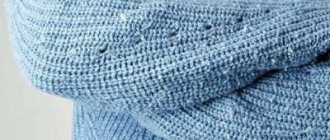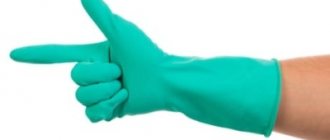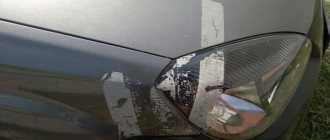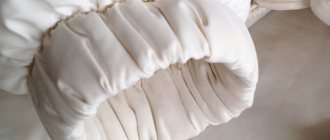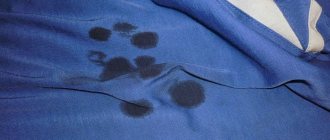Telegram
VK
Viber
It’s quite unpleasant when pellets appear on your favorite blouse, woolen dress or trousers. The appearance of pills on knitwear is a fairly typical situation, and there are many ways to save your favorite item. Of course, clothes with pilling look worn out and not beautiful, but you shouldn’t part with them. There are many simple ways to remove pills from clothes. We will tell you about them all so that you can choose the best one for yourself.
Why do pills appear on clothes?
If you watch your clothes, you will realize that pilling does not always appear. Namely:
- If the item is heavily worn, most of the pilling appears exactly where the wear is worn.
- The fabric rubs too much when washing
- Recommendations for the care of woolen clothing are not followed; inappropriate and low-quality washing powders, rinses and conditioners are used.
- Advice on ironing woolen items is not followed.
- The product is made from low quality fabric.
As you can see, a huge number of reasons can lead to the formation of pilling on clothes. And we cannot always avoid them. Therefore, it is useful to know how to remove pills from clothes in order to always look neat and tidy.
Life hack 1 - tape or adhesive tape
Regular stationery tape will help you remove hated hairballs from your favorite clothes. This is done very simply. Cut a small piece of adhesive tape, press it firmly against the problem area on the clothing and tear it off with a sharp movement. Repeat this movement several times, since you most likely will not be able to remove all the pellets in one go. This is such a useful use of an ordinary thing.
Important:
This method of removing pellets is suitable for things where pellets have just begun to form. If you want to get rid of pellets that have formed a long time ago, you need to use other methods.
Lifehack 2 - machine for removing pellets
There is such a device as a pellet clipper. If you have it, then you are very lucky. With its help you can remove pellets from the surface of almost any fabric. Even from angora, mohair and, of course, knitwear. The anti-pilling machine very delicately removes formed pills from the surface of clothing and does not damage the fabric.
If you want to use the machine to remove pills from a knitted dress or suit, you will need to adjust the speed of the machine. And then treat the entire woolen product with it. Just one cleaning and your clothes will be as good as new!
Of the minuses, it is worth noting that the machine for removing pellets is that it runs on batteries, and they run out very quickly.
“We have a slight flirtation with GOST”
Standards regulating the composition of hosiery and underwear knitwear require that the labels correctly indicate the components of the yarn from which the main part of the product is knitted. GOST 8541-2014 allows the production of socks “with reinforcement in the areas of the lower part of the footprint, heel, and high heel.” Reinforcement is usually the addition of synthetic filament without mention of the modified composition of the reinforced parts on the label.
According to the mentioned GOST, “it is allowed to produce products from all types of yarn, threads, and their combinations with elastane threads. The content of synthetic threads in the product, including elastane, is up to 60%.”
The same GOST establishes what the foot length of the sock should be in order to correspond to the declared size, and how to measure it (on a flat surface, in an unstretched state, in a straight line, from the edge of the toe to the middle of the heel). There are socks that seem to be full-size, but it turns out to be difficult to pull them onto your feet: it’s as if they were previously stretched to fit into GOST standards. Such socks shrink after washing, and putting them on is either difficult or impossible, or they are worn out to holes on the very first day.
Manipulations with composition and sizes allow unscrupulous manufacturers to allegedly remain within the framework of GOST standards and write about this on the labels, and when the socks are purchased, unpacked and worn, it is difficult to make claims.
According to Roskachestvo, 65% of socks are counterfeit.
Lifehack 3 - brush to remove pellets
In craft stores you can find such a wonderful thing as a brush for exfoliating clothes. This is the most convenient brush for removing pellets. It looks nothing special, but it does an excellent job of removing pellets from clothes. You can clean your sweater in just a minute. After all, white pellets do not decorate anyone. Therefore, if you are looking for how to remove pills from a coat and do it quickly, then look for such a brush.
Some useful tips
- To simplify the selection of pairs, you need to purchase a batch of socks that are the same in material and color. Having bought three dozen identical pairs of products, you can make a laundry bag once a month exclusively from socks, without mixing them with other things.
- In the case when the pair is not very dirty and needs to be washed to refresh, it is recommended to put one sock inside the other so that they do not get lost.
- It is convenient to use a separate box or bag for dirty socks, and connect the items in pairs with special clips.
- Some people don’t like it when socks go into the wash at the same time as other things, and it takes a long time to wait for just such items to be completely washed. In such cases, socks are often washed by hand.
- The easiest way is to lather each sock with soap and place them in this form in a basin. After this, we put the socks on our palms, like mittens, and begin to wash them. The process is reminiscent of vigorous hand washing. In this way, you can wash even heavily soiled steam in a few minutes.
- Inventive people have come up with another way to help wash small items without using a washing machine. You need to take a five to six liter plastic container, pour a soap solution into it, push it through the hole, close the lid tightly, and place the bottle in the trunk of the vehicle. During the day of driving, all the things in the bottle will be washed perfectly, all you have to do is rinse them.
Lifehack 4 - old men's razor
This method is ancient, almost everyone knows about it. Suitable for caring for smooth items, especially socks, knitted tights, hats. Where the knitted fabric is smooth, without patterns. In this case, it is best to use an old razor that is already slightly dull. A new one can easily cut the product.
How to remove pills from clothes at home using a razor:
- Stretch and secure the wool fabric so that you can handle it comfortably. Moreover, you should not stretch it too much - this can cause the clothes to stretch and lose their shape.
- Lean the razor against the surface of the fabric, without pressing it, but as if from above, cut off the pellets from the clothing. Run the razor from bottom to top across the clothing to catch as many pellets as possible.
- In this way, clean all the places on the sweater where pills have formed.
How to remove pills from clothes with a razor
Important:
This is a rather aggressive way to remove pellets from clothes; there is a high probability of cutting the fabric. Not suitable for caring for angora, cashmere, and mohair.
Reasons for appearance
Much depends on the composition of the fabric. Natural fibers are more susceptible to abrasion and twisting, which leads to the appearance of pilling. Synthetics suffer much less from this. Experts say that in order to avoid the appearance of pilling, chemical treatment is necessary, which leads to strengthening of the tissue.
Speaking about the proper care of textiles, it is worth focusing not only on washing, but also on drying clothes. You should also use the right cleaning products. Those fabrics that are difficult to heat treatment should be dried using a special system, since it is impossible to use an iron to smooth them.
In any clothing, it is advisable to sometimes look at those areas that often rub against something. Here, the occurrence of unpleasant lumps is a common occurrence. For example, on a sweater it is worth inspecting the area under the arms, at the neckline. On trousers, pellets often appear between the legs or at the “fifth point”.
Lifehack 5 - sandpaper
Fine-grit sandpaper is a great alternative for removing pellets if you don't have a razor or machine at hand. They work with sandpaper just like with an old razor. Stretch and fix the woolen fabric, using sandpaper to remove lumps of wool from the pile of the sweater, working from bottom to top.
Advice:
If your favorite sweater pills heavily and quickly, you can use the sandpaper method every week. This will not ruin your clothes.
Lifehack 6 - haircut
If large pills form on clothing, you can simply cut them off with sharp scissors. This is a rather long and labor-intensive process, how to remove pills from a sweater? since you will need to cut off the lumps one by one, one by one. There is also a possibility of damaging wool trousers, a dress or a jacket.
Advice:
To make it easier for you to remove pellets, comb your sweater first with a fine-toothed comb. The comb will remove the smallest lumps and it will be easier for you to remove all the remaining pellets.
Lifehack 8 – toothbrush
A regular toothbrush will help remove pellets from a long-pile sweater.
- Lay out your clothes on any surface so that it is convenient for you to clean them.
- Then use a toothbrush to comb the areas where the pills have formed on the clothes. This should be done easily, without pressing hard on the fabric.
- After cleaning your clothes with a toothbrush, you will need to wash them with a special powder for delicate fabrics. If you can’t figure out how to remove pills from your pants, then take a closer look at this method.
Advice:
If you love angora and wool clothes, the easiest way is to purchase a separate brush for cleaning these clothes. It is best to use a soft toothbrush to avoid damaging the fabric or snagging threads.
Polyester instead of cotton, acrylic instead of wool
In the “Miracle of Technology” program, men's socks were examined and found that few people can distinguish between synthetic and natural fiber by touch. For example, polyamide and viscose can be mistaken for natural cotton, while acrylic is considered natural wool. Manufacturers actively take advantage of this, indicating a natural composition on the label, but using yarn consisting mainly of synthetics. The most enormous deception, as Roskachestvo established, was carried out by the manufacturers of BITEX socks: instead of 85% cotton, the composition actually contained 98% polyester.
Lifehack 9 - bread crumbs
A very unusual thing can help you in removing pellets from woolen items - bread crumbs. You can use this method to remove pills from clothes if you have nothing else at hand. You will need a thick piece of cracker; thin pieces will crumble quickly. The easiest way is to dry it yourself in the oven or naturally. Moreover, you need to dry the cleaning rusk on a non-greasy surface, otherwise your clothes will acquire a greasy sheen. And choose loose bread for drying so that it removes unnecessary lint from the fabric.
After drying the bread, simply use it to clean the pellets from your clothes. They will cling to it and be removed from the clothes.
Cotton is different from cotton
If the manufacturer and seller did not lie, if the socks actually contain 80% cotton, it is too early to rejoice, since cotton is not the same as cotton. Cotton comes in different types, which are divided into many varieties. After harvesting, the cotton is sorted: the highest grade is the longest fibers, the lowest is actually production waste with debris and scraps.
Selected combed cotton will be used to twist into dense, smooth yarn and knit socks that will last a long time and remain looking like new: without scuffs, pilling, or bald spots. Low-grade cotton will not be thrown away - it will also be made into yarn and knitted into socks, but they may turn out to be disposable.
Good, high-quality cotton socks should not be fluffy and delicately soft; this, together with their tone and transparency, are sure signs of the imminent appearance of holes.
The techniques listed above are only a small part of the tricks used by manufacturers and sellers. Information on labels should not be trusted, but relying on personal feelings is not always a guarantee to avoid mistakes, since few of us know how to distinguish cotton from viscose and polyamide by touch, and acrylic from wool and polyester.
But this does not mean that labels should not be read: the presence of grammatical errors is a good reason to suspect counterfeiting and refuse to purchase.
“...The lightest, thinnest and smoothest thing, like the skin it protects, a woman’s stocking is a symbol of the most supernatural creation, because it has no seams, like the tunic of saints.”
Source
Lifehack 10 - dry cleaning
Pills on clothes on expensive delicate fabrics are best removed by dry cleaning. This method is quite expensive, but it will allow you to save your favorite thing and not spoil it. In addition, you will have a guarantee that you will receive it back in perfect condition and without stains.
Advice:
This method of removing pills from clothes is suitable when you have already tried all the home methods and nothing has worked for you. The dry cleaner will clean your favorite wool pants quickly and easily.
What to do to prevent pilling from forming on things
Having chosen for yourself the best way to get rid of pills on clothes, it’s time to think about what to do to make them form again. We want to give you some tips:
- be sure to read the instructions on what mode to wash, wring out and iron clothes and follow them;
- do not soak or wash delicate items made of wool (mohair, angora) together with coarse fabrics, as this can ruin all the items;
- use conditioners for delicate fabrics when washing wool clothes;
- choose good and high-quality washing powders that will not harm delicate fibers;
- Do not wring, soak, or rub delicate fabrics.
Try to remove pills from clothes as soon as they appear. While there are few of them, it is easier and faster to deal with them than when a large number of them multiply. Even a couple of minutes of attention to your things will lead to the fact that the problem with pilling on clothes will not even arise. Here are 5 ways to get rid of pellets from woolen items, which will remove all remaining questions about removing pellets from clothes.
How to properly wash white socks
They are difficult to wash after the first wear. In order for the products to become snow-white again, you will have to pre-soak the items. If such a mode is available in the washing machine, then it can be done directly in the drum, otherwise you will have to use a regular basin . Water heated to thirty degrees is filled into it, the powder is dissolved, and things are placed in the basin. After a few hours, the socks go into the washing machine.
